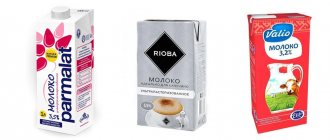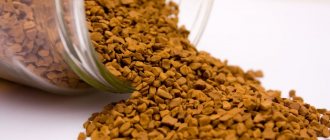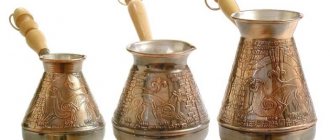How to properly store coffee at home
The assessment of coffee quality is determined by the results of organoleptic analysis in terms of appearance, color, aroma and taste. The ground and soluble product is obtained through special processing of natural grains.
The maximum amount of oils in grains can preserve the nutritional content for a long time.
Instant coffee prepares faster than ground coffee. However, in terms of aroma and taste, the ground freshly brewed drink is more rich and pleasant.
Coffee is adversely affected by 4 main factors that negatively affect its quality:
- Light.
Constant direct light and sunlight, being a catalyst for unwanted chemical processes, lead to the loss of aroma and taste of coffee;
- Air.
The quickly volatile oils contained in the grains are destroyed upon contact with air due to oxidation;
- Temperature.
High temperatures evaporate the oil contained in coffee and destroy the caffeine;
- Humidity.
The hygroscopic properties of the product are capable of absorbing moisture from the air with further loss of taste and aroma.
General rules for storing coffee at home are to comply with the following requirements:
- darkened closed location;
- maintaining 50-60% humidity;
- do not exceed the ambient temperature above 23°C;
- contents in special bags, packaging, containers with an airtight tight-fitting lid.
During long-term storage, coffee may lose its taste and aroma. It is most reasonable to buy a small amount of the product that you can drink in 1-2 weeks.
How to properly store coffee: basic rules and secrets from professionals
Even the best quality coffee can be ruined in just a couple of hours. It is enough to leave the pack open or forget to put it in a dark place. There are several more secrets on how to extend the life of coffee, which will be a revelation for many. A word from our expert, q-grader and professional coffee taster Ilya Goncharov.
Three pillars of storage
- an airtight storage container to prevent its worst enemy, oxygen, from reaching the coffee.
- humidity is not higher than 65%, otherwise mold will be added to the oxidative processes.
- high temperature or sudden changes. Optimally 20-25 degrees Celsius.
All this applies to both bean coffee and ground coffee. Although our expert recommends buying grain, you can store it longer and make it easier. As a rule, coffee is stored in the kitchen, where the temperature often fluctuates, various odors are present and condensation may appear. Since coffee is very susceptible to all of this, it is important to package it carefully.
“The best helpers in this are special barrier bags that provide complete isolation. This means that no oxidative processes occur and the aroma of the drink is completely preserved,” says Ilya Goncharov.
According to him, another good storage option is ceramic or glass jars.
But the main thing is to choose an airtight container with a tight-fitting lid (for example, with a silicone rim). If the container is transparent, it must be hidden behind solid cabinet doors to avoid exposure to sunlight. And the coffee can itself should only be used for coffee.

Otherwise, the grains will absorb foreign odors, which will also affect the quality of the drink. For the same reason , you should avoid tin or plastic containers - they can also add unnecessary notes to the drink.
It’s even better to use a so-called vacuum sealer. This device allows you to remove air (at least most of it) from bags or containers. This way the freshness of the product is preserved longer. A useful gadget, by the way, not only for coffee.
Smart stocks
All of the above applies to short-term storage, but in the case of coffee there is also long-term storage. Although if there is no urgent need, it is better not to buy coffee for future use, the expert says. In closed factory packaging, the grains remain fresh throughout the entire shelf life. And even longer - nothing will happen to coffee even after 5 years:
“It will not become hazardous to health, and the caffeine will not evaporate anywhere. The expiration date indicated by the manufacturer is a guarantee that the drink will not lose its aroma during this time. Although it all depends on the variety - for example, in the case of Robusta, where earthy-woody notes predominate, most likely the difference will not be noticeable at all.”
But it’s better to take the volume that you can handle in one or two weeks. This is how long coffee retains its aromatic properties after opening the package. So there is no need to prolong the pleasure. Moreover, now it is not at all difficult to buy the freshest roasted coffee with delivery anywhere in the world.

Another important rule: bean coffee should not be ground for future use - after all, it loses its aroma in a matter of minutes:
“For professional baristas, everything is laid out in seconds: after grinding, no more than 10-15 seconds should pass. If you hesitate, or, for example, the machine malfunctions, the portion is considered spoiled and is thrown away.”

Is the refrigerator friend or foe?
Can coffee be stored in the refrigerator? This issue is still controversial. Some say that extremely low temperatures improve the properties of coffee. Others insist that such storage kills the drink. Yes, coffee really likes coolness, but a sudden change can be disastrous. In addition, the door is often opened and closed, which causes condensation to form. And if there is even slight damage to the packaging, then the coffee will also absorb all the aromas of the refrigerator.
However, in emergency situations you can still use the refrigerator. More precisely, a freezer. You can store coffee there for no longer than two months and always in vacuum packaging. Before use, it should be allowed to warm to room temperature.
By the way, do you more often buy ground or bean coffee?
Ground coffee Lebo “Prince”, for Turkish, 100 g 79 rub.
Coffee beans LavAzza “Qualita Oro”, 500 g 752 rub.
Ground coffee Lavazza “Crema e Gusto”, 250 g 258 rub.
Lavazza “Qualita Oro” coffee beans, 250 g 351 rub.
View all coffee
Storing Roasted Coffee Beans at Home
Roasted coffee beans are a delicate product that cannot be stored for long. When using multi-layer vacuum packaging, the oxidation process is prevented: the contained gas vent valve removes carbon dioxide from the roasted beans.
The packaging is carefully closed and does not allow air inside. Opened vacuum packaging should be used for up to 3 weeks.
You can extend the shelf life of an opened coffee package in the refrigerator by placing it in a glass container. A glass jar with a tight lid not only ensures better preservation of the grains, but also protects against foreign odors.
Shelf life of roasted beans:
- in vacuum packaging - 12 months;
- in a glass jar - up to 6 months;
- in opened store packaging −14 days.
How to properly store coffee at home
Truly delicious coffee can only be prepared from selected high-quality beans. The variety, blending, roasting, and most importantly, proper storage are important here. Compliance with certain conditions is the key to preserving the taste and aroma of this invigorating black drink.
Grains in a glass jar

The best place to store coffee beans will be a hanging kitchen cabinet. Ideally, it is completely closed and made of natural material. An important condition is that the shelf with coffee beans should be located at least 4-5 meters from heating devices and at least a meter from the floor. The “neighbors” of the grains will also have to choose calm ones - it is better if they are cereals or pasta. But it’s better to keep the spices away, otherwise the beans will absorb the aromas of the spices.
After opening the package, the grains should be poured into a glass jar with a tight-fitting lid; darkened glass would be best. But after being in a tin or metal can, the coffee will have a metallic taste.
Ground
After grinding, coffee becomes more demanding on storage conditions, so the rules are somewhat specific. Although the general recommendations coincide with the grain version.
If you don’t have a vacuum sealer at home that allows you to extract air from a bag of coffee, then the best option would be to store it in the original pack.
It protects the powder from exposure to light, moisture and foreign odors. In addition, it is created in such a way that condensation does not form inside and the coffee does not become damp. If the opened package does not have a reusable lock, it is necessary to release as much air as possible and tightly twist the edge of the package, securing it with a special clip or a regular stationery clip.
Soluble in tin packaging

The main enemies of the instant drink are dampness and temperature changes. Because of them, the product will quickly gather in lumps and lose the aromatic substances remaining after processing in production. Dry air and a dark place will preserve the taste characteristics of instant coffee.
If you need to store an open pack for a long time, it is better to wrap it in foil, and in the case of a jar, place a piece of foil between the lid and the container itself. If for some reason the package is opened and the coffee has lost its aroma, you can put a cinnamon stick inside and close the bag tightly, after a few days the coffee will again have the same smell as before.
Where can you store ground coffee?
After grinding, the vulnerability of the coffee increases significantly. At home, it can be stored in the same containers in which it was purchased. Special packaging optimally protects against the effects of negative factors:
- factory sealed packaging - 10-12 months;
- vacuum packaging - 18 months;
- multilayer bag with valve - 12 months;
- jar with a tight-fitting lid - 12 months;
- foil package - 12-14 months.
Open packaging preserves the quality of ground coffee for up to 10 days.
Jar
The preferred jar material is glass, clay, ceramics. The jar should have a tight-fitting lid (with a silicone layer) that will prevent the penetration of moisture and air. Prefer jars with opaque walls to protect the product from light.
Storing coffee in airtight containers has a number of disadvantages compared to special bags.
- Immediately after roasting, gases form in the beans, so it is best to wait a couple of days before placing the roasted product in a jar.
- After closing the lid, air and trapped moisture remain in the jar, which contribute to the occurrence of oxidation processes.
- Transparent glass allows light to pass through; it is better to wrap such a jar in thick material.
Experts strongly advise against using plastic containers (jars or containers) for three reasons. Firstly, the material has a specific odor that is quickly absorbed by the grains. Secondly, the containers do not have sufficient tightness (air and moisture will get inside). Thirdly, they have transparent walls that do not protect the product from light rays.
We recommend: The main advantages of storing seasonal items in boxes and rules for implementing the idea

How to store instant?
Instant coffee is a short-lived product. It contains a small amount of natural substances that give coffee its unforgettable aroma.
When opening the purchased product, it is better to pour it into a sealed glass container. Opened packaging retains the properties of coffee for up to 1 week, provided it is tightly closed during use.
Shelf life of instant coffee:
- original packaging - up to 2 years;
- glass jar with an airtight lid - 24 months;
- tin can - 18-24 months.
General storage rules
Green coffee beans are the most resistant to loss of taste. Green coffee beans should only be stored in an airtight jar so that harmful air for this product does not penetrate into the packaging. It is advisable to place the jar in a dark place where sunlight does not penetrate. Raw grains can be stored for more than 1 year if you follow all the necessary rules.
Roasted coffee, which everyone is used to, has a much shorter shelf life than green coffee. Factory packaging with a valve preserves the aroma for about 2-3 months (the period is indicated on the packaging). After opening or mechanical damage, the shelf life is reduced to 15 days. Particularly demanding “coffee lovers” advise using the package 10 days in advance. This does not mean that the drink will become unsuitable for consumption, but a decrease in taste and aroma richness is guaranteed.
- Package. When opening, cut off only a small corner. After pouring the required amount of grains, release the maximum amount of air, wrap the cut part of the package several times and fasten it with a clothespin.
- Jar. The main condition is tightness. Storing coffee in a glass or plastic jar with an airtight lid has a longer shelf life.
We recommend: How to select, prepare and store zucchini until the next harvest?
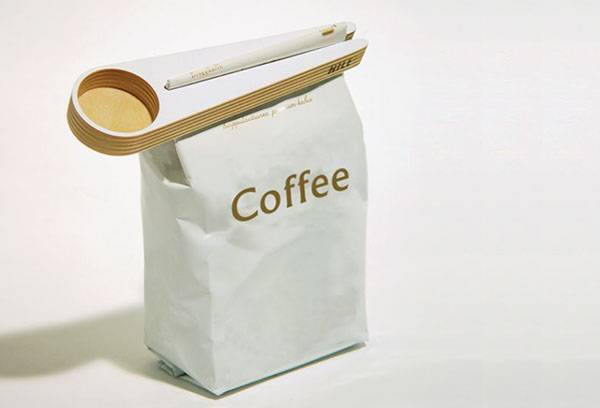
Table of shelf life of coffee at a certain temperature
| t, °C | Raw coffee | Grains | Ground | Soluble | ||||
| Package | ||||||||
| Closed | Open | Freshly ground | Closed | Open | Closed | Open | ||
| From 0 to −20 | 3 years | 3 years | 2 months | cannot be stored | 2-3 years | 15-30 days | 5 years | 1 year |
| 13-16 | 2 years | 2 years | 10 days | 2 days | 6-18 months | 10-14 days | 3 years | 4-5 months |
| 25-35 | 10 months | 6 months | 1 day | 3-5 hours | 3-6 months | 5 days | 18 months | 1 year |
Storage space
The kitchen cabinet is the most ideal home place to store coffee. A prerequisite for such a cabinet must be distance from the sink, stove, window, and tightly closed doors.
On the shelf, next to coffee, you need to exclude the proximity of spices, herbs, dried fruits and other strong-smelling products.
In the absence of a hood, it is better to place the coffee at the middle level of the kitchen height, where the optimal temperature and humidity levels are located.
The refrigerator is not the best place to store coffee. The presence of foreign odors and temperature changes have a bad effect on the quality of the drink. The freezer provides a shock method for freezing hermetically sealed portion bags. With this method, all the qualities of coffee are preserved for up to 2 months. A portion is taken out as needed - this eliminates the possibility of re-freezing the package.
Storing coffee beans (roasted)
The shelf life of purchased roasted beans depends on the packaging:
- loose coffee, which is sold in specialized stores and packaged in ordinary paper bags, is stored for no more than 2 weeks;
- the shelf life of coffee beans packaged in sealed four-layer paper bags is up to six months;
- if there is a polymer film inside such a bag, the shelf life of coffee increases to 9 months;
- Roasted coffee can be stored for a year in heat-sealed film or foil bags equipped with an air valve;
- in factory-made opaque jars with lids - up to 1.5 years;
- in vacuum packaging – up to 1.5 years.

Once the package is opened, the coffee should be used within 12–14 days. If the package has an air valve and a clasp, the coffee may not be poured into a separate container. After each use, press down on the bag to release the air and close the clasp.
If, when opening the foil package, it is damaged, the coffee must be poured into a container with a tight-fitting lid. They do the same with coffee that they roast themselves at home. Instead of containers, foil bags with zip-lock fasteners are sometimes used.
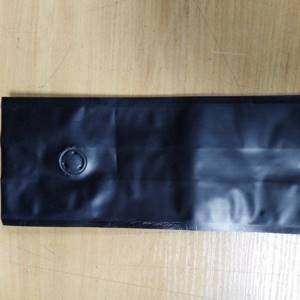
Sealed bag with degassing valve
Beans roasted at home are placed in bags and containers no earlier than 3-4 hours after roasting: this time is required for carbon dioxide to evaporate from the grains. On the first day after packing roasted coffee into bags, they may swell due to the release of carbon dioxide. In such cases, you should open the clasp slightly and press on the bag.
But if there is too much roasted coffee and it cannot be completely used in two weeks, experts recommend blast freezing the beans. To do this, you need a freezer with dry freezing. The grains are divided into portions and poured into ziplock bags. There must be exactly one serving in the bag: coffee cannot be re-frozen.
Packaged coffee is placed in the freezer away from meat, fish and cottage cheese. In the freezer, roasted beans retain their taste and aroma for 2 months.
If you accidentally find an unopened sealed package of roasted beans on a cabinet shelf, the shelf life of which expired no more than 2 years ago, do not throw it away. You need to open the bag, smell and inspect the coffee.
Stale grains are dark in color, have an oily sheen, and smell like rancid oil. If the aroma has weakened, but there is no unpleasant odor, the beans can still be used to make milk-coffee cocktails or coffee with spices.
Roasted beans stored in unsealed packaging are much worse. But sometimes they are usable even 3 years after roasting. The main thing is that there is no rancid smell.
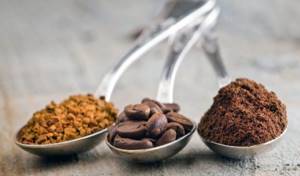
Coffee Tips
- It is not recommended to use plastic or metal storage containers, from which the coffee acquires a specific smell.
- The refrigerator is not suitable for short-term storage of coffee.
- After being frozen, the grains are warmed at room temperature.
- Avoid storing coffee on a windowsill or near a heating installation.
Its rich taste and unique aroma depend on proper storage of coffee. Attentive attention to the contents of everyone’s favorite drink and adherence to storage rules will allow you to pamper yourself and your loved ones with a bright variety of coffee varieties.






